Deep Recovery
An evocative sound work and risograph publication by Libita Sibungu that interrogates colonial archival practices, drawing on the artist's experiences in Cornwall and the British Geological Survey archives, and exploring themes of memory, identity, and the impermanence of landscapes.
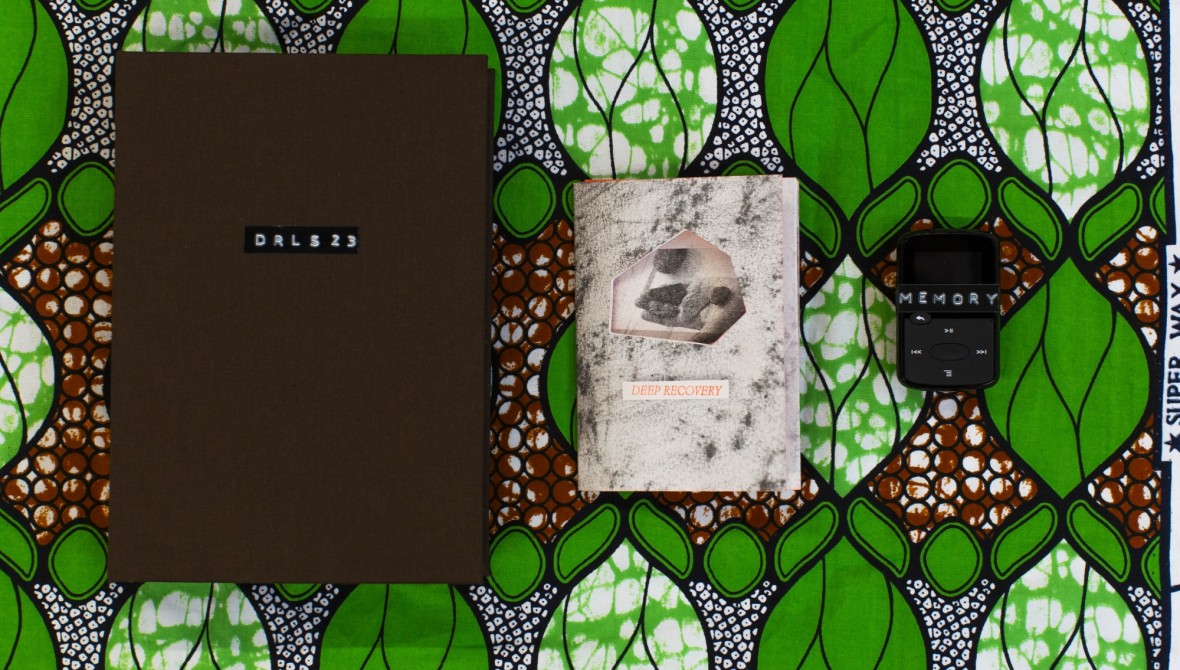
(Photo credit: Deep Recovery, Libita Sibungu, 2023)
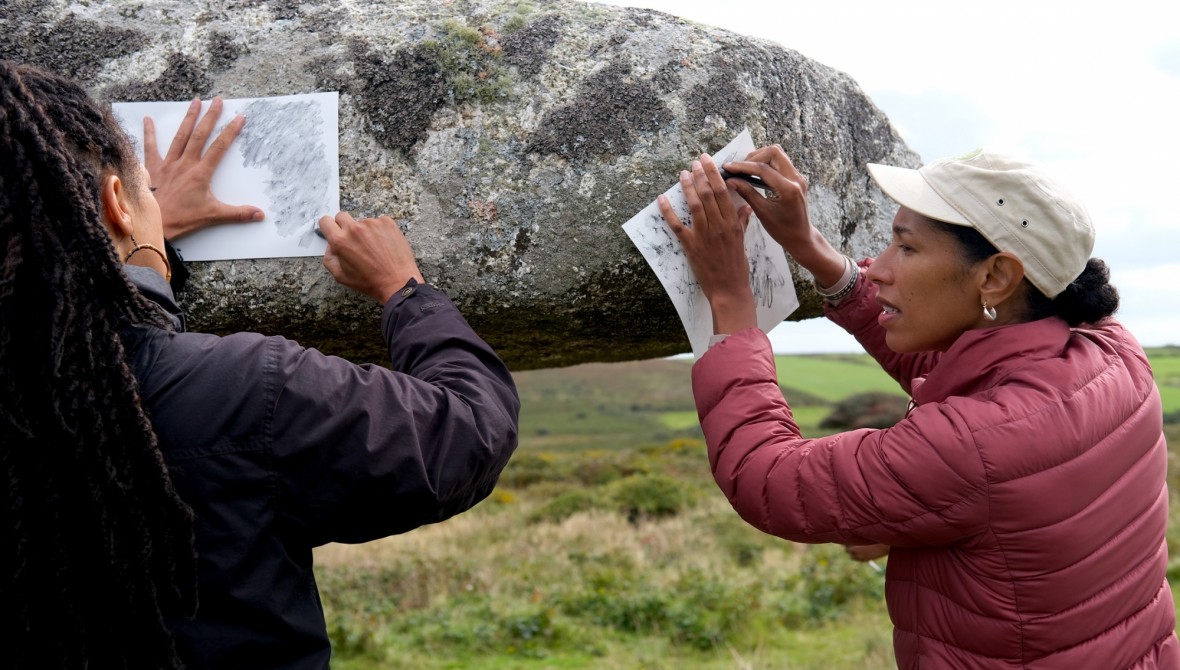
(Photo credit: Deep Recovery, Libita Sibungu, 2023)
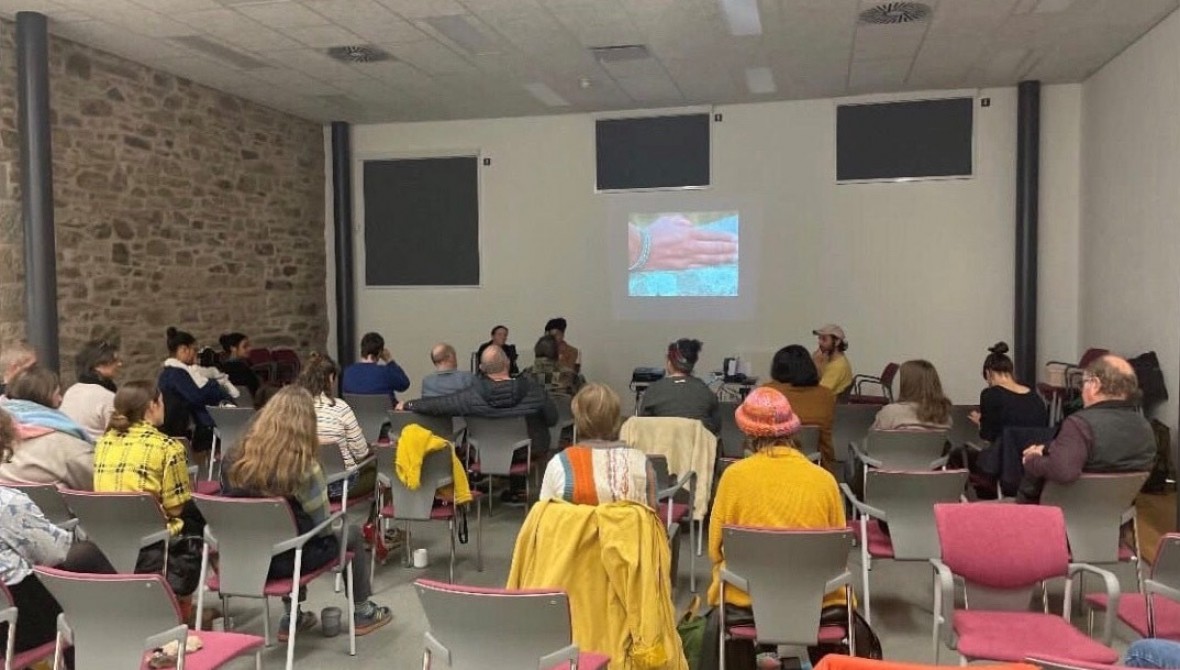
(Photo credit: Deep Recovery, Libita Sibungu, 2023)
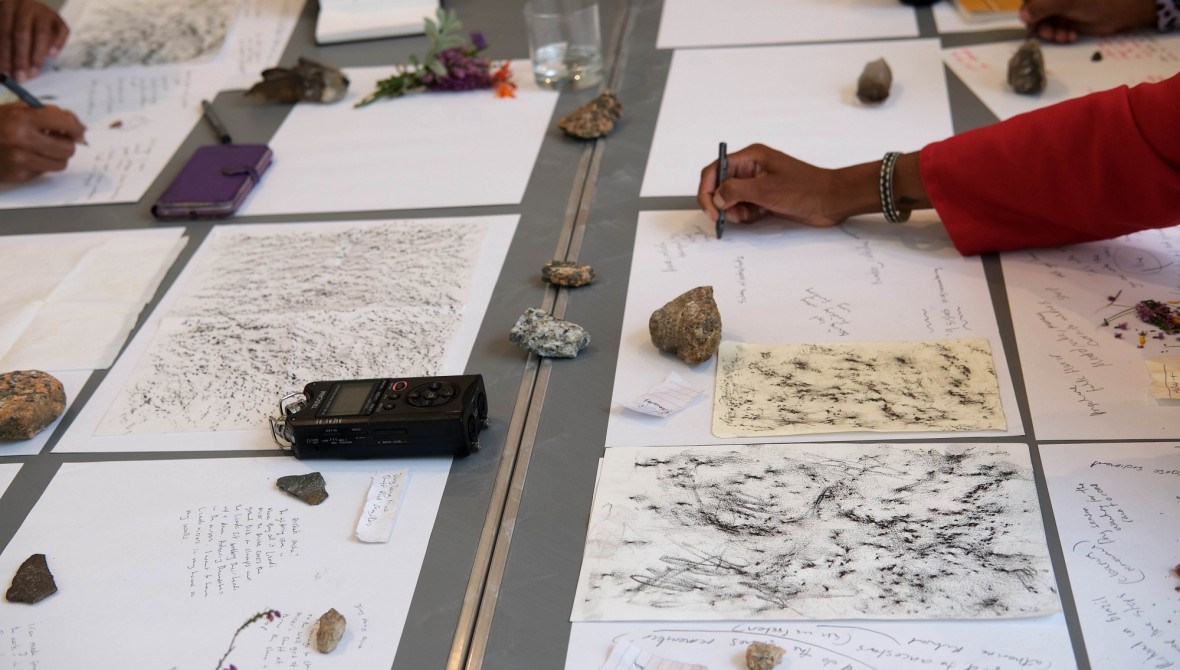
(Photo credit: Deep Recovery, Libita Sibungu, 2023)
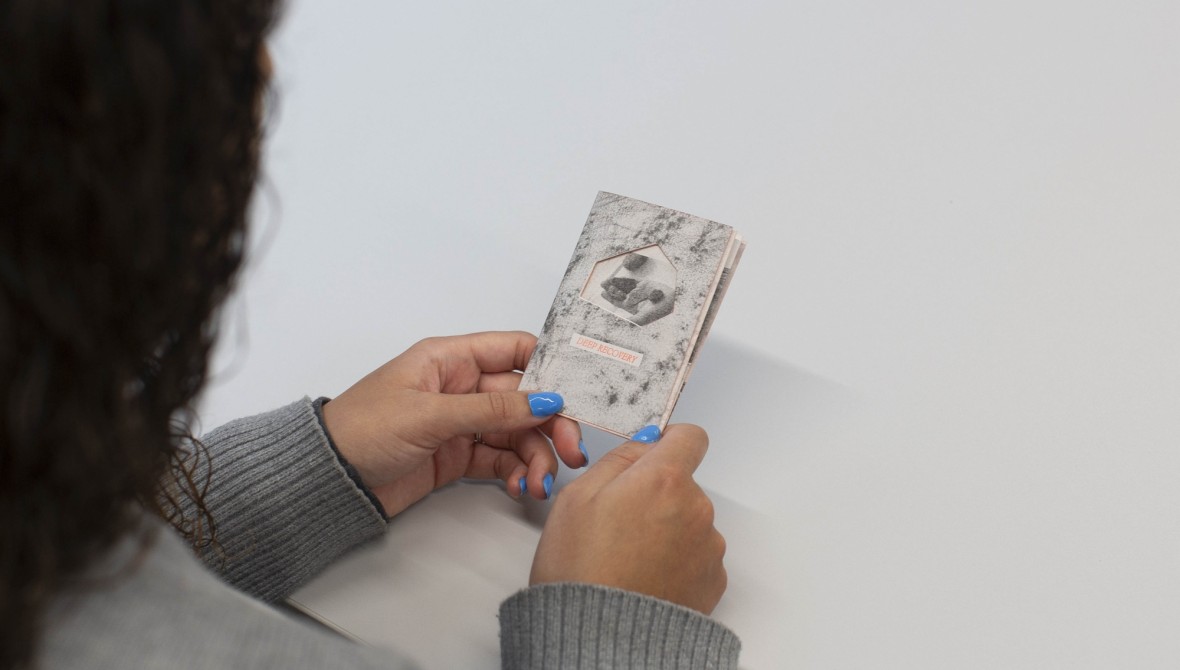
(Photo credit: Deep Recovery, Libita Sibungu, 2023)
Click on the right hand side of the image above to scroll through the gallery.
Deep Recovery (2023) by Libita Sibungu is a sonic fragment comprising a sound work and small risograph publication housed in a bespoke archival box fabricated by Rhea Evers. The work is designed to be sited in archival spaces and experienced as an intimate act of listening. Click through the above images to view further documentation of the work.
Responding to a research visit to the British Geological Survey archives in Keyworth, Nottinghamshire, as well as the narratives told about granite in the artist’s home of West Cornwall, Sibungu’s work questions the colonial logic of archiving: what is determined worth storing, what becomes erased, and whose perspectives are valued. Deep Recovery plays with the form of an archival object whilst existing as an unruly sonic fragment, a trace of embodied knowledge.
The work was developed through a series of workshops led by the artist together with a group of mixed heritage women artists* living in West Cornwall, walking in the granite-rich landscape, visiting sites of geological significance, and making field recordings, before later translating these embodied experiences to language, improvisation and collective reflection. The resulting sound work includes excerpts of these field recordings alongside poetic scripts written by the artist and performed by the women involved.
Acting as a counter narrative to the stories told of the permanence, solidity and endurance of the granite landscape, and its connection to a particular idea of Britishness, Deep Recovery instead invites us to see the impermanence of geological forms: the mineral rich veins and cracks which weave quartz and black tourmaline through the granite landscape, and the nature of the granite itself as coming from the sea, destined to erode. Alongside the fluidity which characterises the landscape is a renewed understanding of who belongs to the land, and how our own stories attach to our environments.
*Vocal contributions by the unruly artists, singers, writers, healers, mothers: Maria Christoforidou, Caroline Deeds, Catherine Lucktaylor and Angeline Morrison.
Deep Recovery was commissioned by Radar, Loughborough University’s contemporary art programme. It has been produced with support from Liz Howell. Sound produced by SJ Blackmore at Cling Clack Studios.
Accessing Deep Recovery
For one month, Libita Sibungu’s Radar commissioned work Deep Recovery (2023) will be located at Pilkington Library on the Loughborough University campus. Students, staff and members of the public are invited to experience the work during Library opening hours.
For more information please click on our event at the bottom of this page, via the events tab in our menu, or click here.
For a limited time, you can listen to the complete audio of Deep Recovery via Radar’s YouTube channel below. To view a transcript of the audio, click ‘Watch on YouTube’ on the video below.
The making of Deep Recovery
The 'sonic fragment' at the heart of Deep Recovery was generated from a 2-day workshop across granite rich sites in West Cornwall with artists: Maria Christoforidou, Caroline Deeds, Catherine Lucktaylor, Angeline Morrisson
The group were invited to come together and explore 3 granite sites in West Penwith: Lanyon Quoit, Nine Maidens Stone Circle and Ding Dong Mine. Libita spoke about her research so far, and a local geologist talked through the scientific processes and mineral make-up of granite. The group were invited to touch, breathe, talk, collect objects and make rubbings of the sites.
The second part of the workshops was a group sharing of their reactions and experience of the walk and stone sites, followed by an exploration and improvisation session through sound and voice. This was held at The Exchange gallery Penzance and hosted and led by Libita.
Launch Event for Deep Recovery
We celebrated the launch of Deep Recovery with an event at Kresen Kernow in November 2023. The launch event included an introductory talk by Geologist Dr Beth Simons and a poetic response by the artist, followed by conversation.
Dr Beth Simons is a Cornish geologist with a PhD and a number of publications on the mineralogical and geochemical variation of granites in southwest England, including the relevance for extraction of critical metals for the low carbon economy, such as lithium. Since 2017 she has worked for INGOs and a UN agency in humanitarian shelter response to disasters and conflict, with a recent focus on supporting local building cultures.
Kresen Kernow (‘Cornwall Centre’) is home to the world’s largest collection of documents, books, maps and photographs related to Cornwall’s history. Kresen Kernow is a state-of-the-art archive centre built in the shell of the former Redruth Brewery. As well as 14 miles of shelving to store over 1.5 million of Cornwall’s treasured archives, the centre has exhibition spaces, learning rooms, a preservation studio and a digitisation suite. Visitors can carry out research, pop in and browse the library and exhibitions, or take part in our varied activity programme featuring creative workshops, courses and fun family events.
About the artist
Libita Sibungu (b.1987, Cornwall) lives and works in West Penwith. She is a multidisciplinary artist drawing on her British-Cornish-Namibian heritage to make discursive works that explore the entangled personal histories, and colonial legacies inscribed in the body and land. Sibungu employs sound, performance, photography, and installation — as a way to usher subversive pathways into the present through reimagining materiality, movement, and collective healing in relation to the environment.
Sibungu is the recipient of both the Paul Hamlyn Foundation and Arts Future Foundation awards (2022). Selected exhibitions have been with; Kunsthall Trondheim, Norway (2023); Sonsbeek, Netherlands, and Temple Bar Gallery, Ireland, (2021); Gasworks, London, and Spike Island, Bristol, (2019).
Artists
Events
Deep Recovery: Launch Event
Sat 25 November - Sat 25 November - 2023
10:30am - 12:00pm
We helped launch Libita Sibungu’s new work Deep Recovery at Kresen Kernow, Redruth. The launch event included an introductory talk by Geologist Dr Beth Simons and a poetic response by the artist, followed by conversation. Read more
Deep Recovery at Loughborough University
Mon 10 February - Mon 10 March - 2025
09:00am - 17:00pm
For one month, Libita Sibungu’s Radar commissioned work Deep Recovery (2023) will be located at Pilkington Library on the Loughborough University campus. Students, staff and members of the public are invited to experience the work during Library opening hours. Read more

